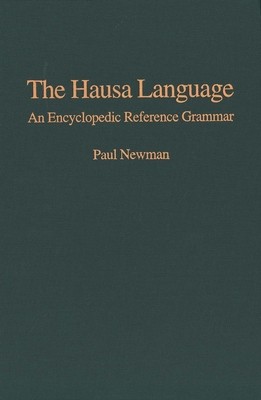
- We will send in 10–14 business days.
- Author: Paul Newman
- Publisher: Yale University Press
- ISBN-10: 0300081898
- ISBN-13: 9780300081893
- Format: 17.8 x 25.4 x 4.3 cm, kieti viršeliai
- Language: English
- SAVE -10% with code: EXTRA
Reviews
Description
This book is a comprehensive grammar of Hausa, one of the largest and most important languages of Africa. Hausa is spoken by some 35 million people as a first language and approximately 15 million more as a second language. Paul Newman, a world authority on the Hausa language, draws on two centuries of Hausa linguistic scholarship to provide the most authoritative and detailed grammar of the language ever written. Unlike other grammars, this book is organized alphabetically. Readers will appreciate the ease with which they can find the specific individual topics that interest them. The grammar covers such expected topics as tonology, noun plurals, and verbal tense/aspect as well as often neglected topics, including verbal idioms, proper names, and language games. Newman also incorporates historical linguistic notes that explain and explicate current Hausa phenomena, especially puzzling anomalies, in terms of their Chadic and Afroasiatic origins.
EXTRA 10 % discount with code: EXTRA
The promotion ends in 23d.22:56:14
The discount code is valid when purchasing from 10 €. Discounts do not stack.
- Author: Paul Newman
- Publisher: Yale University Press
- ISBN-10: 0300081898
- ISBN-13: 9780300081893
- Format: 17.8 x 25.4 x 4.3 cm, kieti viršeliai
- Language: English English
This book is a comprehensive grammar of Hausa, one of the largest and most important languages of Africa. Hausa is spoken by some 35 million people as a first language and approximately 15 million more as a second language. Paul Newman, a world authority on the Hausa language, draws on two centuries of Hausa linguistic scholarship to provide the most authoritative and detailed grammar of the language ever written. Unlike other grammars, this book is organized alphabetically. Readers will appreciate the ease with which they can find the specific individual topics that interest them. The grammar covers such expected topics as tonology, noun plurals, and verbal tense/aspect as well as often neglected topics, including verbal idioms, proper names, and language games. Newman also incorporates historical linguistic notes that explain and explicate current Hausa phenomena, especially puzzling anomalies, in terms of their Chadic and Afroasiatic origins.


Reviews